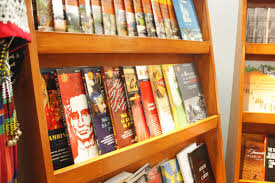
Welcome to the web page of the course Philippine literature! This website is a humble on-going project as part of my modest desire to help you my dear learners become lovers of Philippine literature. In my desire to transcend the barriers of traditional classroom interaction, and limited class contact hours, this website was born. This is both timely and relevant considering the pervasive effect of technology integration to learning and pedagogy. Let us then take advantages of the positive effects these advancements bring to the classroom. I enjoin you to embark on this journey together and let us all discover the rich and colorful Philippine literature masterpieces from the beautiful regions of our country, the Philippines.
“Literature is the art of discovering something extraordinary about ordinary people, and saying with ordinary words something extraordinary.” ~ Boris Pasternak
Course description
This course is a comprehensive study of Philippine Literature from the beginning of Philippine literature to the present. It introduces students to the development of the various literary genres of the Philippines. Through discussion and analysis of various literary genres and elements, this course seeks to enhance students’ awareness and appreciation of Philippine Literature.
Course objective
The course aims to develop among the students the appreciation to literary pieces and respect to cultural diversities.
Course intended learning outcomes (CILOs)
By the completion of this course, the students should be able to:
- Demonstrate critical thinking skills in understanding the breadth and depth of Philippine literature;
- Recognize the development of the literary genres of the Philippines;
- Enhance awareness and appreciation of Philippine literature;
- Develop communicative competence through activities that will enhance both oral and written language skills;
- Understand that Philippine Literature promotes and preserves worthwhile and universal values of Filipinos;
- Appreciate their own culture.
Philippine literature course topics
Prelim Period (Weeks 1–6)
Introduction to Literature and Literary Genres: Meaning of literature, Importance of the study of literature, Standards of good literature/Literary Standard, Literary Approaches, Divisions of literature, Literary Genres.
Philippine Literature Forms in Different Periods. Pre-Spanish Period. Historical background of Ancient Philippine Literature, Literary Pieces. Legends: Why the Sea is Salty, Epic: Indarapatra at Sulayman, Other Forms of Literature: Proverbs/Sayings/Maxim, Epigram, Riddles, Chant.
Midterm Period (Weeks 7–12)
Spanish Period. Definition of Poetry, Types of Poetry, Elements of Poetry, Poetry: Awit at Corrido: Florante at Laura, Ibong Adarna. Prose: Urbana and Felisa, Drama: Religious: Panunuluyan, Senaculo, Salubong, Tibag, Pangangaluluwa, Lagaylay, Moriones, Secular: Karagatan, Duplo, Balagtasan, Bukanegan, Crisotan. Folksongs: Pamulinawen, Manang Biday, Atin Cu Pung Singsing, Leron-leron Sinta, Sit-sirit-sit, Paru-parong Bukid, Sarong banggi, Dandansoy, Lawiswis Kawayan.
Propaganda and Revolutionary Period. Liwanag at Dilim by Emilio Jacinto, Ang Tunay na Dekalogo by Apolinario Mabini. American Period. Introduction to Drama, Types of Drama, Elements of Drama, Drama Analysis: The World is an Apple by Alberto Florentino.
Final Period (Weeks 13–18)
Japanese Period. Haiku and Tanka. Movie Analysis: A Classic Movie during the Japanese Occupation. Philippine Literature During Contemporary to Modern Period. Poetry Analysis: Laughter by Maningning Miclat. Short Story Analysis: Children of the City by Amadis Guerrero, Essay Analysis: Pliant like a Bamboo by Ismael Mallari.
Culminating Activity: “Philippine Literature Through the Years.” Presentations of various Philippine Literature classes. Each class will be assigned to present a literary piece from each period: Pre-Spanish Period: An Epic (Indarapatra at Sulayman) Spanish Period: Senaculo, Pabasa, Moriones American Period: Music and Dance of the time Japanese Period: Reading/Interpretation of Haiku Contemporary Period/ Modern Period (Martial Law, EDSA, Present Time) dramatization of the events and/or music.
Course references
The references listed here and in the course syllabus are available in the TIP Quezon City library. However, you may still consult other references and materials pertinent to your quest of study. You have a rich compendium of resources both online and offline waiting for you to tap in the Library. Here are some of the references:
- Soriano-Baldonado, Rizza. (2013). Readings from World Literatures: Understanding People’s Culture, Traditions and Beliefs: A Task-Based Approach. Quezon City: Great Books Publishing.
- Vinuya, Remedios V. (2012). Philippine Literature: A Statement of Ourselves. Metro Manila: Grandbooks Publishing, Inc.